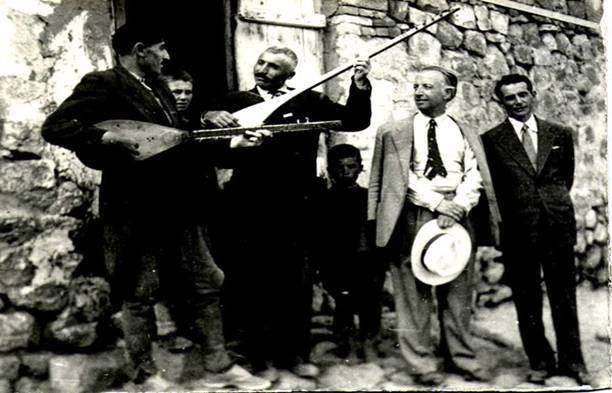Bonum Est: a programme on Gregorian Chant. Eastern Liturgies 19 – Sufi music of the Bektashi Order.
The ‘ashiq’ (lover) searches for Divine Love, the One, by music and dance, and and thus neglects all worldly pleasures. He is an important figure in the surrender of the Bektashi tradition but also for other regional cultures.
Bektashi distinguishes itself in many aspects from other traditions, like the equality of men and women in the religious ritual (‘Djem’: literally: gathering).
"Yo-lu-muz on i-ki i-ma-ma çı-kar
Reh-ber-im Mu-ham-med Ah-med-i muh-tar
Mür-şüd-üm A-li-dir sa-hib Zül-fü-kar
Vi-rân-i kul-un-dur di-va-na gel-dim"
(Our path leads us to the twelve Imams,
My guide is Muhammed, Ahmed Muhtar,
My master is Ali, owner of Zülfükar,
Virâni is servant, member of the gathering)
(Virâni, number 5)
1. The twelve Imâms and the invocation of Allâh
2. Semah – içeri semahı
3. Meydan Saz
4. Invoking the Masters of the Order and blessing of the Chapel
5. Hymns, invocation and initiation (Nefes’ of Kul Himmet and Virâni)
6. Ascension (Miradjlama) and the Feast of the Forty
7. Ilahi Dostum Bağına
8. Alamut Semahı
9. Derdim Çoktur (Pençgâh Bektaşi Nefes)
10. Derdim Çoktur
1, 4, 5 & 6: Ali Dede / Hasan Dede / Djafer Doghan
CD: Turquie – Cérémonie du Djem Alevi
(Ocora, C 560125, 1998)
2: Field recording of Kahramanmaraş, Elif Ana Cem House. (bron: www.piryolu.com)
3, 7 & 10: Ali Ekber Çiçek.
CD: Turkey – Bektashi Music. Ashik Songs
(Auvidis/Unesco, D 8069, 1996)
8. Musa Eroğlu.
CD: Bin Yıllık Yürüyüş – Semahlar 2
(Milhan Müzik, B003LNTO28, 1994)
9. Kâni Karaca.
CD: The Dergah of Musics
(Anadolu Müzik, B002DPT8OO, 2009)
On picture at the top: a Bektashi calligraphy with hidden names (CD: Turquie – Cérémonie du Djem Alevi)
On picture at the bottom: two types of Saz (source)








